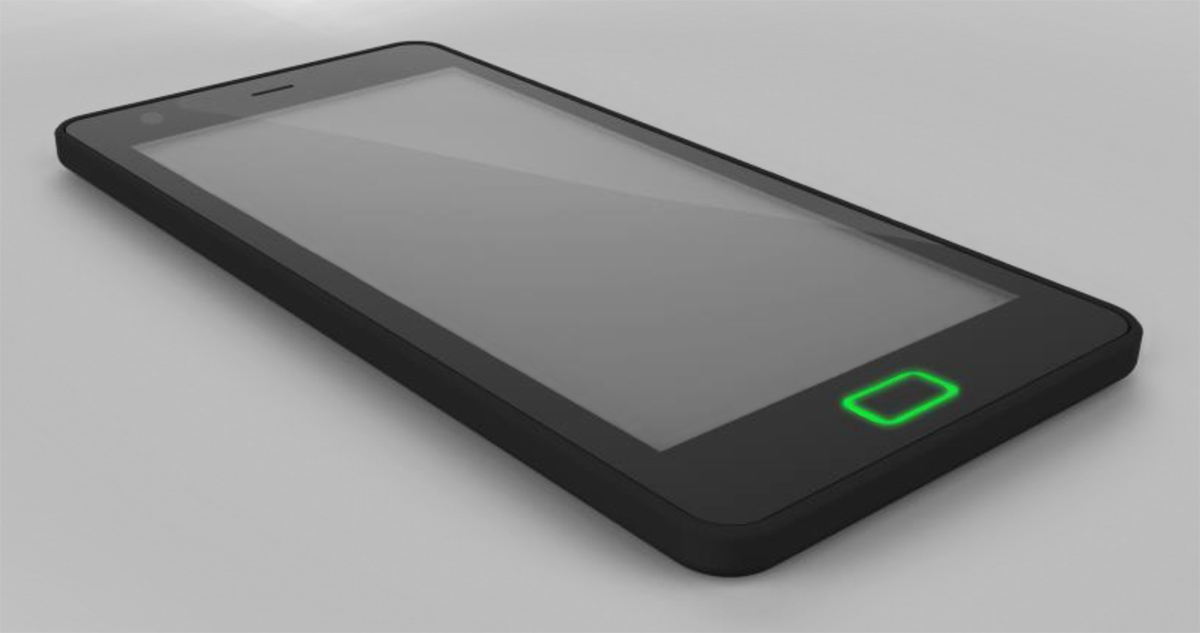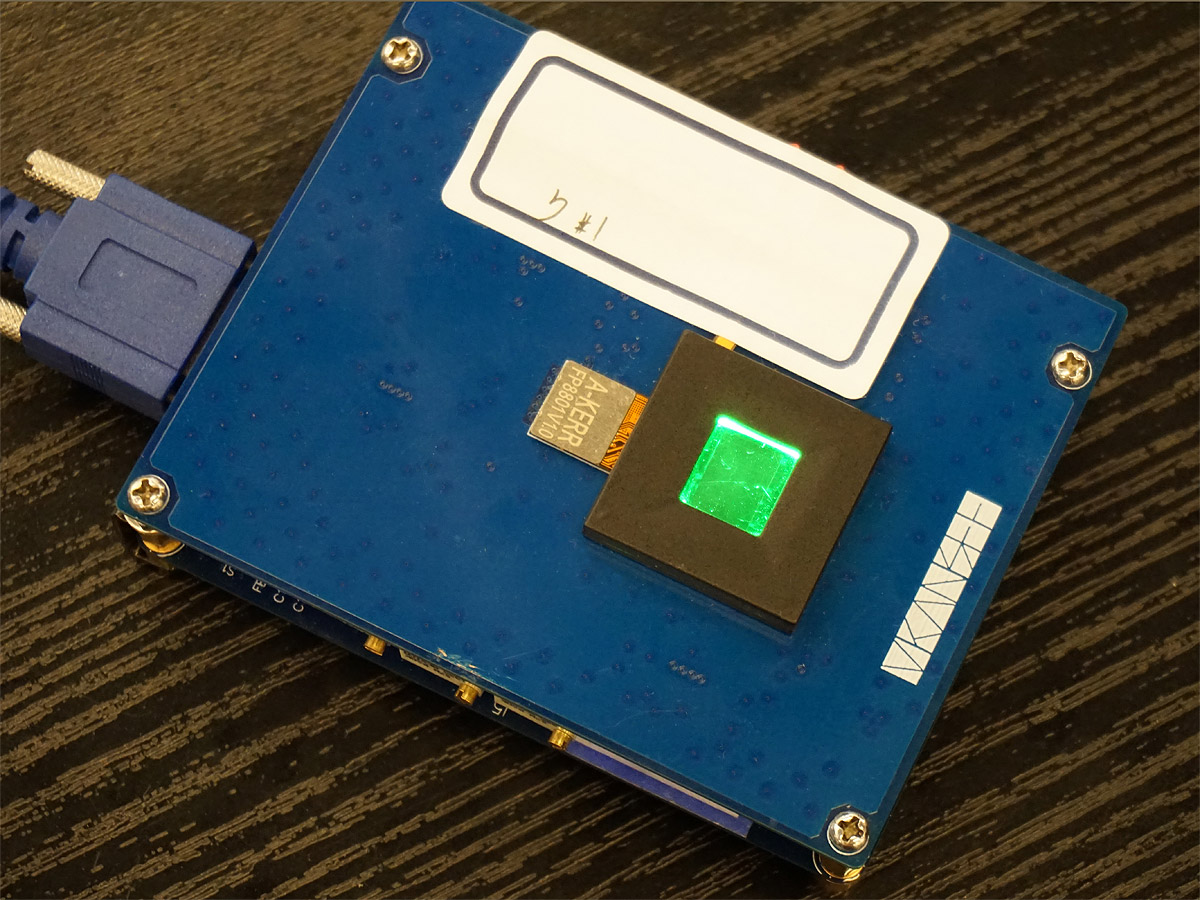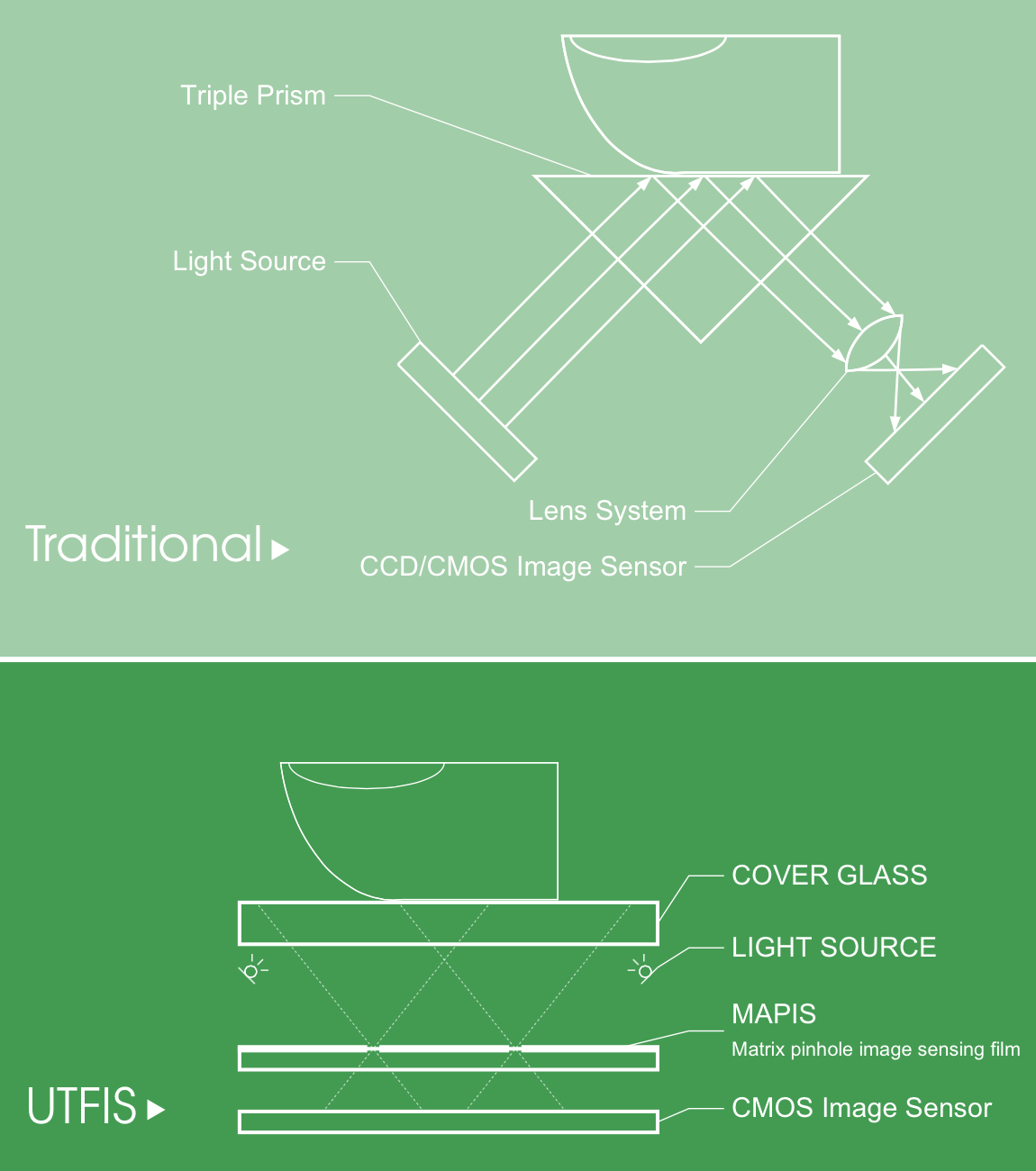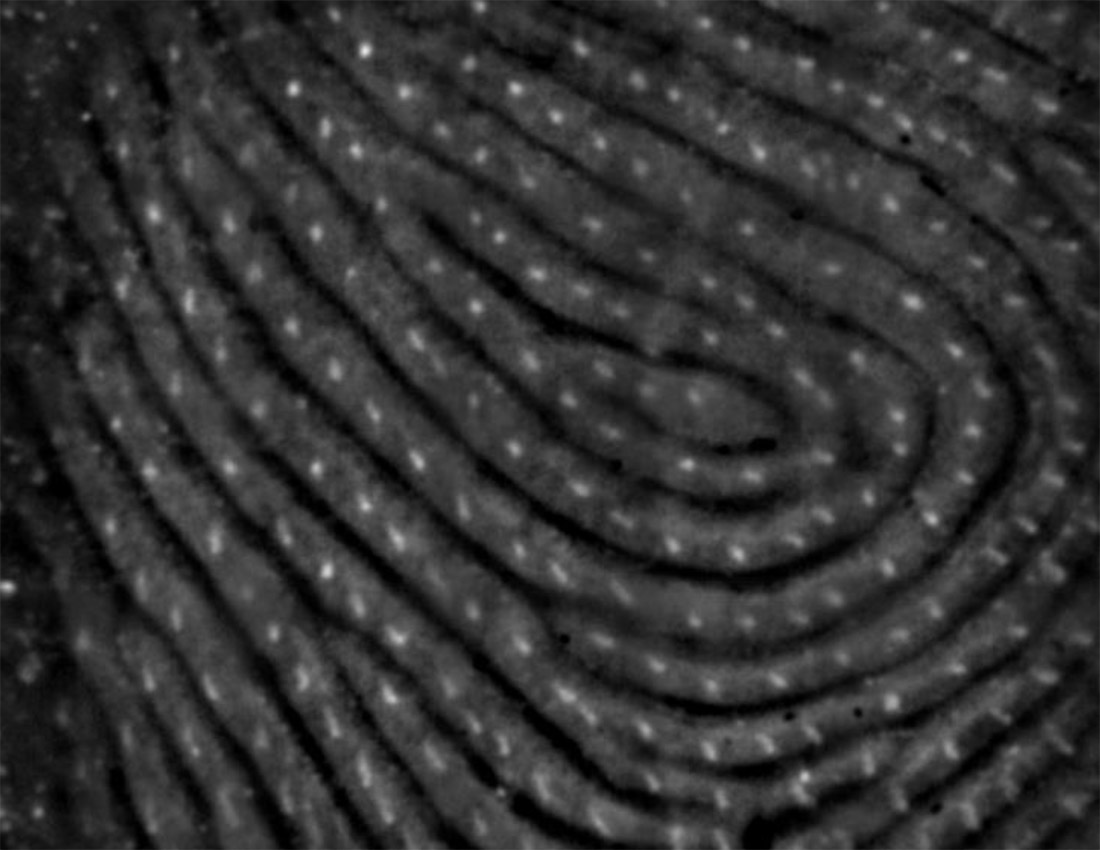Vkansee Brings Optical Fingerprint Scanning To Mobile
Optical fingerprint scanners are regularly used in high-traffic areas such as border crossings or fitness clubs to verify membership. The rugged but bulky construction of optical scanners are well suited to these applications, but not for razer-thin mobile devices, where capacitive sensors are currently used due to their low cost and compact size.
The exclusivity of capacitive sensors will soon end, however, because other methods are making the move to mobile, too. Qualcomm recently announced its ultrasonic fingerprint scanner, Sense ID, for mobile applications, and now Vkansee is doing the same with a new type of optical sensor.
Vkansee's new multi-layered UTFIS sensor replaces the space-consuming prism and lens system of traditional optical scanners with a transparent sheet and a metal film filled with pinholes, respectively. These sit atop a CMOS imaging device, creating a sensor that's only 1.5 mm thick and can be bonded below the cover glass of mobile devices. This solution, together with the company's proprietary software, produces an image with 2000 PPI resolution, four times the pixel density found in standard fingerprint sensors.
With such a high-resolution scan, it can detect third-level features like sweat pores, making it more difficult to fool than capacitive sensors. At MWC 2015, Vkansee demonstrated how a rubber mold of a fingerprint was sufficient to gain access to an iPad Air 2 using Touch ID; however, the same hack failed to bypass the UTFIS sensor. Also, you no longer have to worry about some rogue cutting off your finger and using it to unlock your stolen phone, because your sweat pores would close and foil a match, keeping your sensitive data safe (you would still be missing a finger and your phone, though).
Optical sensors are less sensitive to variations in temperature and moisture than capacitive sensors because they are non-conductive, which should reduce the number of false rejections. In the video below, Jason Chaikin, Vkansee's President, demonstrates how the UTFIS sensor still works even if his finger is wet. Optical sensors, because they image the surface of the skin, encounter problems when the finger is dirty, however.
Vkansee provides OEMs with several different color options for its sensor. The imaging surface, which can be seen below the cover glass, comes in black, white, silver or gold. The sensor is also encircled by an LED light, which provides the near-infrared light necessary for imaging and also serves as a vanity light, indicating where to place the finger or flashing to alert the user to a message or notification. The LED lights are available in white, green, blue or red, and there's a clear option, as well.
According to Vkansee, several OEMs are currently evaluating its new sensor, and we could potentially see it integrated into products by the end of this year or early next.
Get Tom's Hardware's best news and in-depth reviews, straight to your inbox.
Matt Humrick is the Mobile Editor at Tom's Hardware. Contact him at mhumrick@tomshardware.com and follow him on Twitter @digitalOut_net. Follow us @tomshardware, on Facebook and on Google+.




